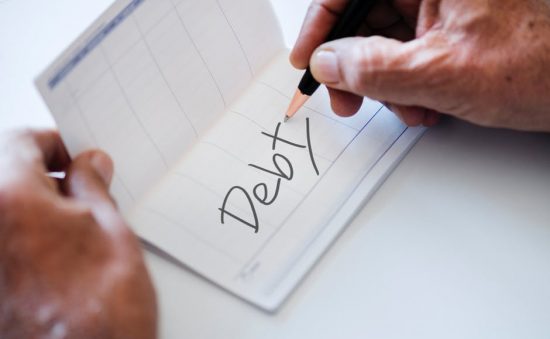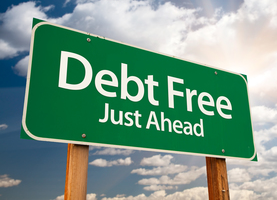by Susan Paige

If you are one of the 48% of Americans with credit card debt, it can seem like you will never break even. It’s estimated that the average American holds over $7,000 in debt.
Credit cards have high interest rates that are designed to catch you and hold you captive. Paying only the minimum suggested monthly amounts means you will never break free. Are you wondering how to manage debt when it seems overwhelming?
Overwhelming Debt: How Did You Get There?
The first key to learning how to manage debt is to understand how you got overwhelmed to begin with. The next? Get started with a plan, no matter how small it seems in the beginning.
Amazingly, many other countries seldom use credit cards at all. Americans whip out plastic to pay for everything from groceries to gasoline. When high interest rates are added to the purchase price of goods and services, the debt adds up quickly.
Do You Only Pay Minimum Balances?
Paying the minimum balances on high-interest cards will result in balances that never lower more than a few dollars each month. Most of your payment goes to the interest on the card.
Are You Paying Maintenance Fees?
Credit cards can be quite sneaky with their maintenance charges. Some charge annual fees and some even charge monthly fees. These fees are unnecessary and they accrue interest charges.
When building credit, these cards may be your only option. Use them sparingly and pay them off each month.
Are You Paying Late?
Credit card companies love when their customers pay late. A payment that is even a day late will result in finance charges or flat rates of $35 or more, depending on the card.
Are You Paying Insanely High Interest Rates?
Retail cards are great examples of credit cards with high rates. Read the fine print before agreeing to the terms of any cards. A retail card may have rates as high as 30% if you don’t have good credit. Even a small purchase on these cards will quickly drown you in debt.
Are You Charging When You Could Be Paying?
It’s easy to pull out the credit card and put every purchase on it. Even the smallest charges you’ve made every day add up before you realize it. These charges, no matter how small they are, will be hit with finance and interest charges.
Learn How to Manage Debt: Helpful Tips for Digging Out
It may seem like you’re drowning in debt, but you can still turn it around. The first step is to identify the behaviors that got you into debt in the first place. Make a budget to list all of your expenses so you can understand where your money is going each month.
Here are some other ideas to help you understand how to manage debt.
Keep Your Head
Some people may panic and try to pay outstanding bills, such as tax obligations and medical bills, with credit cards. Medical bills can be paid over time, and there are ways to settle your tax bill without adding significantly to your debt. Check out this post to read more about settling your tax obligations.
Most creditors are willing to work with you. Contact them and make arrangements before putting large balances on high-interest credit cards.
Debt Snowball vs. Debt Avalanche
A debt snowball is when you pay off your smallest balances first. After the smallest is paid off, use the extra money to pay towards your next smallest. Before you know it, you have paid your small bills and are making significant payments on your larger ones.
A debt avalanche is a pay-down method that pays the debt with the highest interest rate first. This saves you money in the long run, but it doesn’t give you the rapid results that the debt snowball will.
Personal Loan
It may make sense to borrow money to pay off your high-interest rate credit card balances with a low-interest loan. You can make one payment each month rather than several.
The only way debt consolidation succeeds is if you stop using the cards once you have paid them off with the loan.
Pay as You Go
Make your purchases with cash or a debit card linked to your bank account. If possible, transfer money to a special account for purchases. Leave the rest in a savings or bill-pay account.
Avoid the Late Fees
Set up automatic payment plans for every credit card to avoid late fees. Request a different due date if you find you are having trouble paying on the assigned date.
Get Rid of Outdated Cards
Your high-interest credit card with the annual fees may have been all you could qualify for a few years back. If your credit has improved, it’s time to get rid of them. The trade-off in money saved is well worth the hit to your credit report.
If you have a good payment history with the bank issuing the card, they may be open to updating your credit terms.
Minimum Payments Will Only Hurt You
Making only minimum payments will cost you more money and time in paying down the debt. Try to double the minimum payments every month.
Zero-Interest Credit Cards
Opening a zero-interest credit card is a great option for paying off your high- interest cards. You pay no interest on transferred amounts for a period of time, usually twelve to thirty-six months.
If you pay only the minimum payment on these cards, you will not pay the balance before the introductory term runs out.
If you are nearing the end of your introductory period and still have a balance, consider transferring the account to another zero-interest card.
The First Step? Get Started Now
Hiding from your debt won’t make it go away. It’s best to get an accurate snapshot of your finances and get started on debt resolution as soon as possible. Make a plan, and stick with it.
For more tips and hints for helping you learn how to manage debt, contact us here.


So, what do you think ?